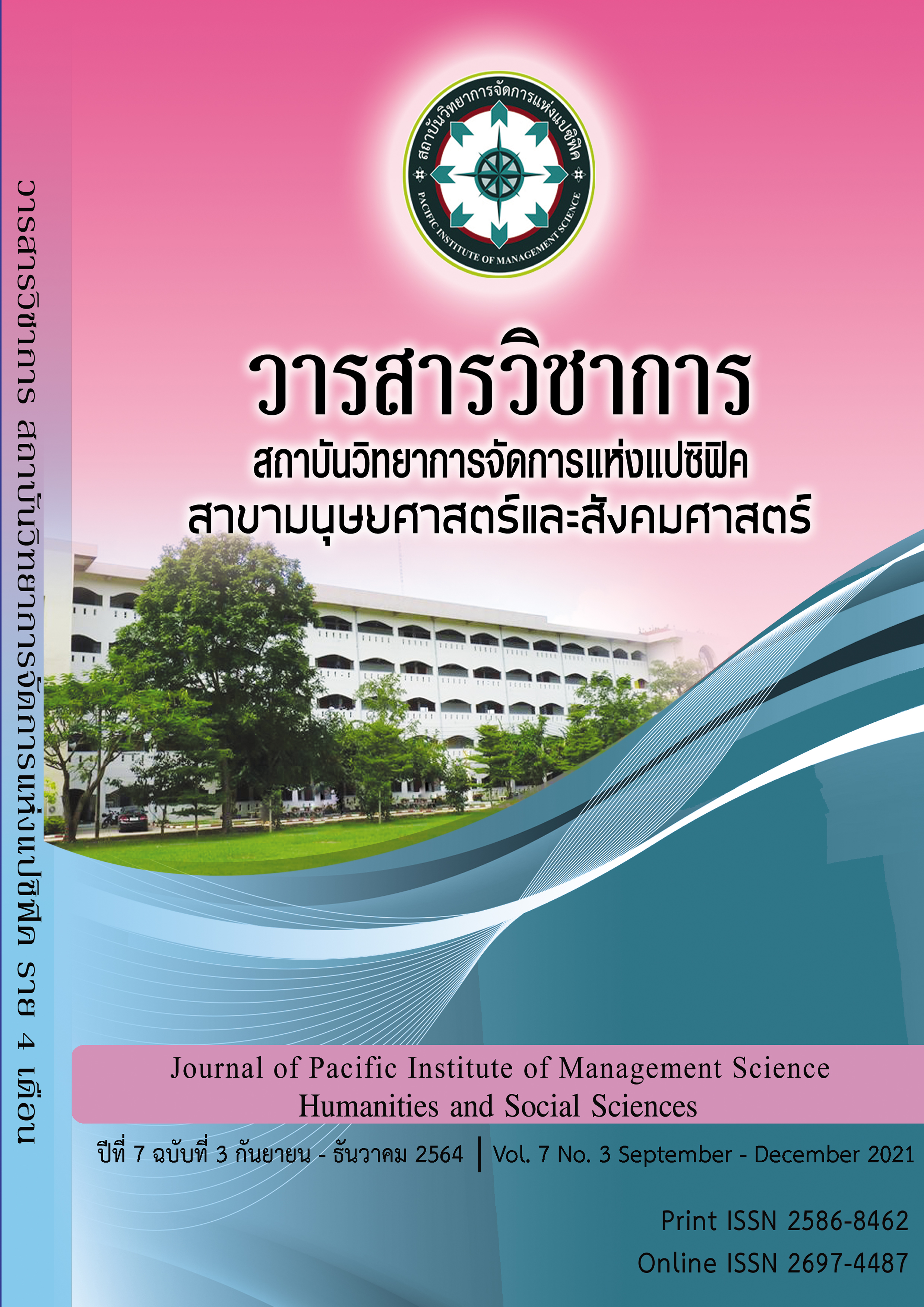The Criteria Standard of Youth Football Academy in Thailand
Keywords:
Standard criteria, Youth football academy, Youth athleteAbstract
The objective of this article is to study the current conditions and establish the benchmarks of Thai youth football practice institutions. With integrated research methods which are 1) Qualitative research by in-depth interview with 12 personnel from the Football Association of Thailand. 2) Quantitative research by using questionnaires to the representatives of the youth football practice center of Thailand Registered with the Football Association of Thailand, 200 people and 3) research by brainstorming ideas. The researcher used 8 youth football experts in Thailand. The research instruments were interview forms and questionnaires. Data were analyzed by Content analysis and analyzing descriptive statistics such as percentage, average, the results showed that the benchmarks for the youth football practice institute of Thailand There should be 5 standards for evaluation, which are 1) sports and medical criteria Meaning sending the team to compete have youth development plans There is an annual health check. health insurance. 2) The criteria for the place and facilities are the standard size field Athlete's room, parking space, emergency plan, first aid room, and having staff to supervise 3) Personnel criteria, namely, having a workplace with office equipment, there is a general manager, finance, physical therapist, head of Youth Development Project and a certified trainer. 4) Legal and financial criteria, namely proof of registration of a juristic person that signed have rules and regulations have proof of account checking and submit annual corporate income tax and 5) Public relations criteria, namely public relations plans, educating parents performance throughout the year and conducting cooperation with local areas, therefore. The Football Association of Thailand should speed up the process of establishing standards for the Thai youth football practice institutions. By dividing the registration into 3 types which are 1) Football Training institute excellence 2) Football practice institutions Sports activities, and 3) football practice institutions Volunteer.
References
กระทรวงการท่องเที่ยวและกีฬา. (2554). แผนพัฒนากีฬาแห่งชาติฉบับที่ 5 (2554-2558), กรุงเทพฯ
สมาคมกีฬาฟุตบอลแห่งประเทศไทย ในพระบรมราชูปถัมภ์. (2559). ประวัติสมาคมฟุตบอลแห่งประเทศไทย (ออนไลน์). สืบค้นเมื่อวันที่ 13 พฤษภาคม 2560, จากเว็บไซต์สมาคมฟุตบอลแห่งประเทศไทย: http://fathailand.org/
อาชวิทธิ์ เจิงกลิ่นจันทน์ วิชากร เฮงษฎีกุล และพงษ์ศักดิ์ สวัสดิเกียรติ. (2561). การวิเคราะห์องค์ประกอบที่ส่งผลต่อความสำ เร็จในอาชีพนักกีฬาฟุตบอลอาชีพของประเทศไทย. วารสารวิทยาศาสตร์การกีฬาและสุขภาพ,19(2), 109-120.
Bruner, M. W., Eys, M., Blair Evans, M., & Wilson, K. (2015). Interdependence and social identity in Youth sport teams. Journal of Applied Sport Psychology, 27(3), 351-358.
Cabrita, T. M., Rosado, A. B., Leite, T. O., Serpa, S. O., & Sousa, P. M. (2014). The Relationship between Athletic Identity and Career Decisions in Athletes. Journal of Applied Sport Psychology, 26(4), 471-481.
Choengklinchan, A. (2018). An Analysis of Factor Affecting Football Player’s Career Success in Thailand Professional Football. Journal of Sport Science and Health, Vol.19, No.2, (May-August 2018), Pp.109-120.
Delaney, T. and T. Madigan. (2009). The Sociology of Sports: An Introduction. United State: McFarland.
DuBrin, A. J. (1994). Applying Psychology: Individual and Organizational Effectiveness. Indiana: Prentice Hall Career & Technology. Lebanon.
Eisenberg, R. (1986). Perceived organizational support. Journal of Applied Psychology 71(3): 500-507.
Elliot, M. P. (1982). Which Way Up: Career Strategies for Career Advancement. Paper presented at the annual meeting of the Academy of Management. New York.
Gattiker, U.E. and L. Larwood, (1986). Subjective career success: a study of managers and support personnel. Journal of Business and Psychology. 1(2), 78–94.
Inoue, Y., Wegner, C. E., Jordan, J. S., & Funk, D. C. (2015). Relationships between self-determined motivation and developmental outcomes in sport-based positive youth development. Journal of Applied Sport Psychology, 27(4), 371-383.
Judge, T. A., & R. D. Bretz, (1994). Political influence behavior and career success. Journal of Management, 20, 43-65.
Kulwanich, A. (2017). The Politicains Roles in The Development of Professional Football Clubs of Thailand. Asian Sport Management Review, 12 (2), 15-24.
O’rourke, D. J., Smith, R. E., Smoll, F. L., & Cumming, S. P. (2014). Relation of parent-and coach-initiated motivational climates to young athletes’ self-esteem, preformation anxiety, and autonomous motivation: Who is more influential? Journal of Applied Sport Psychology, 26(4), 395-408.
Osterwalder, A. & Pigneur, Y. (2009). Business Model Generation. NY: Bridge Communication Co., Ltd.
Saville, D. P. and R. S. Bray, (2016). Athletes’ perceptions of coaching behavior, relation-inferred self-efficacy (RISE), and self-efficacy in youth sport. Journal of Applied Sport Psychology, 28(1), 1-13.
Whitely, W., Dougherty, T. W., & Dreher, G. F. (1991). Relationship of Career Mentoring and Socioeconomic Origin to Managers' and Professionals' Early Career Progress. Academy of Management Journal 34: 331-351.
Downloads
Published
Issue
Section
License
Copyright (c) 2022 Pacific Institute of Management Science

This work is licensed under a Creative Commons Attribution-NonCommercial-NoDerivatives 4.0 International License.
บทความที่ได้รับการตีพิมพ์เป็นลิขสิทธิ์ของ สถาบันวิทยาการจัดการแห่งแปซิฟิค
ข้อความที่ปรากฏในบทความแต่ละเรื่องในวารสารวิชาการเล่มนี้เป็นความคิดเห็นส่วนตัวของผู้เขียนแต่ละท่านไม่เกี่ยวข้องกับสถาบันวิทยาการจัดการแห่งแปซิฟิค และคณาจารย์ท่านอื่นๆในสถาบันฯ แต่อย่างใด ความรับผิดชอบองค์ประกอบทั้งหมดของบทความแต่ละเรื่องเป็นของผู้เขียนแต่ละท่าน หากมีความผิดพลาดใดๆ ผู้เขียนแต่ละท่านจะรับผิดชอบบทความของตนเองแต่ผู้เดียว







